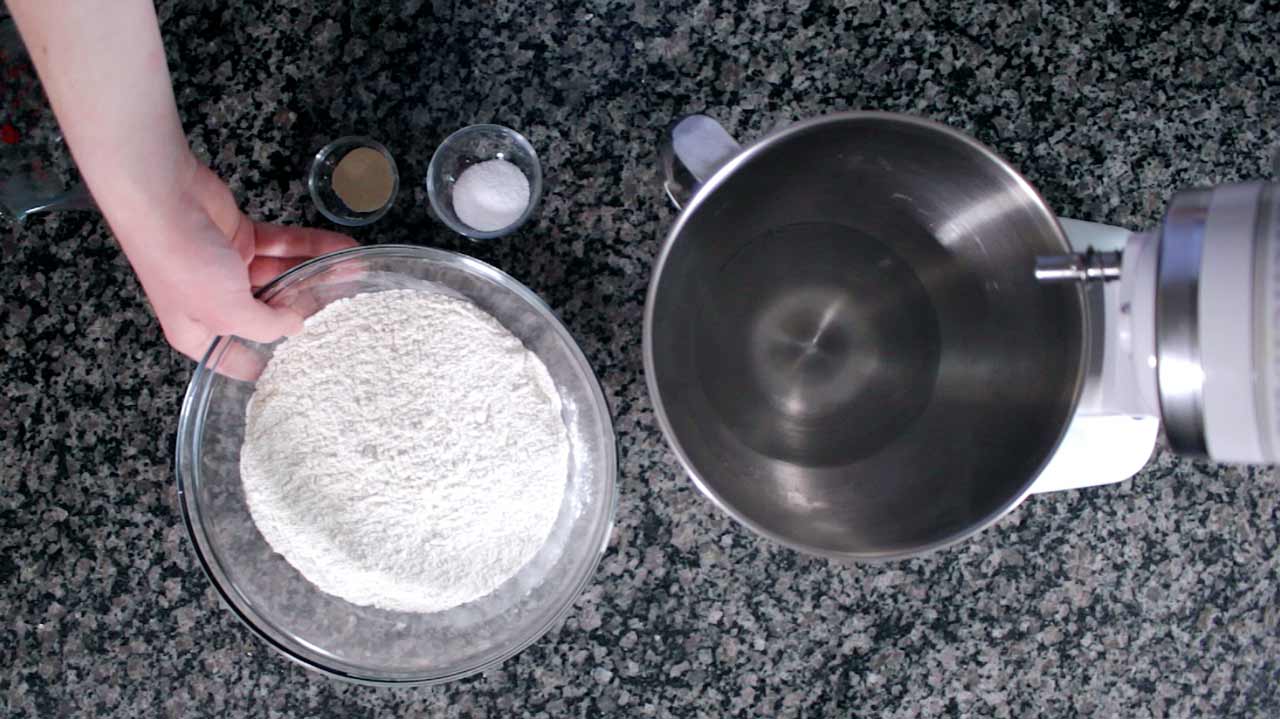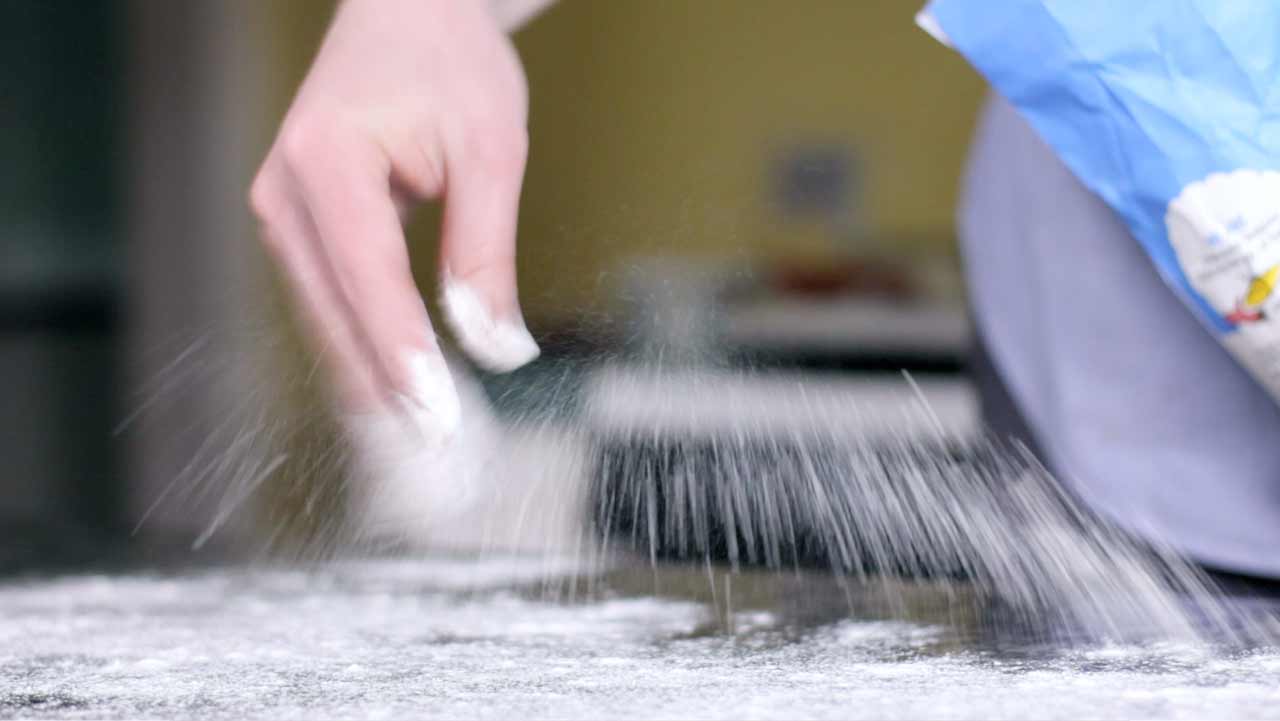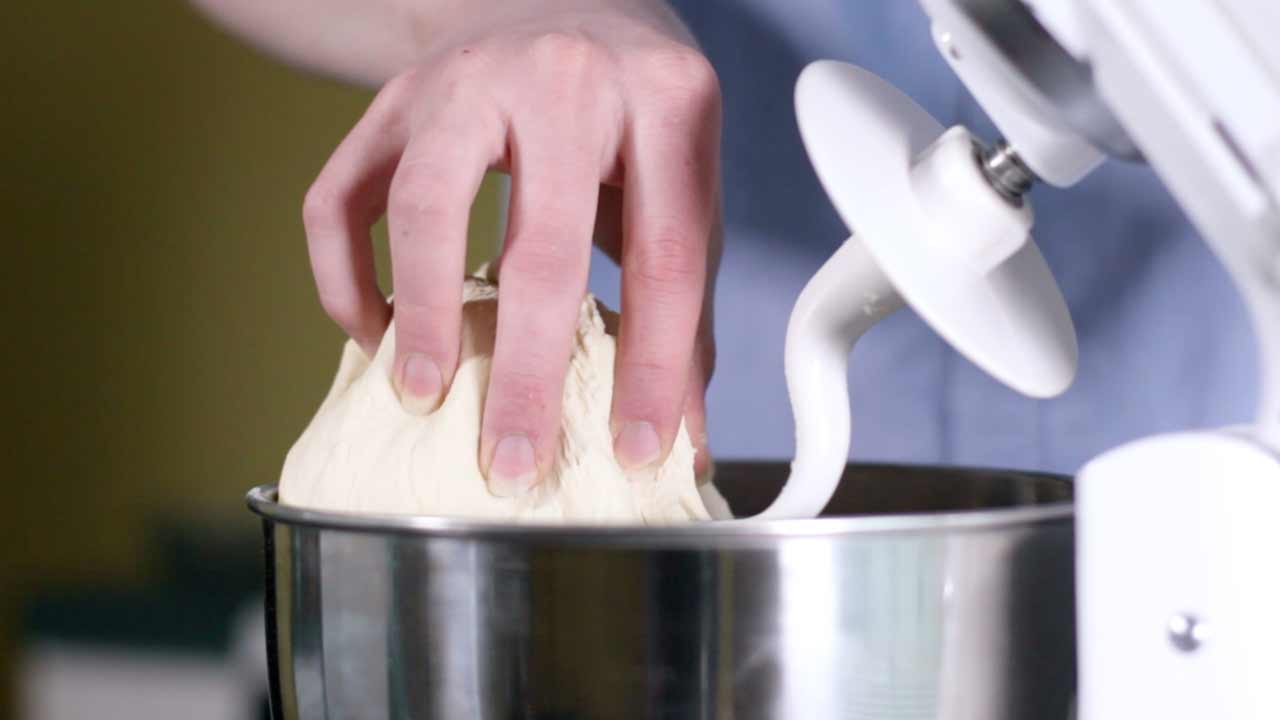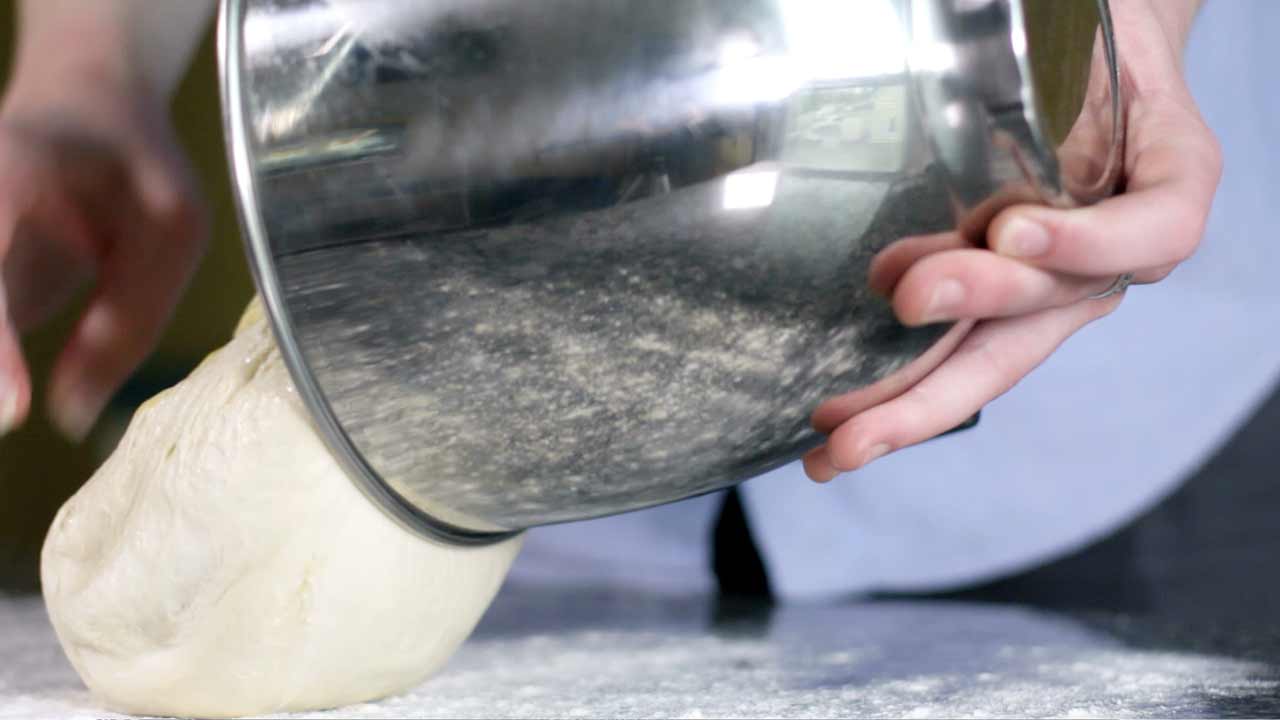Dough In Depth
Pizza stands or falls by way of its crust. This simple dough recipe will get you there every time.
Pizza stands or falls by way of its crust. This simple dough recipe will get you there every time.
The first time I made pizza dough, I was twelve years old. It was the second dish I made by myself (the first being pancakes), and over the years, it’s been the recipe I’ve tinkered with the most. I’ve tried everything, from my parents’ old recipe to the recommendations of dozens of bakers and cooks through books and the Internet. And I think I’ve settled on the right one.
I think. Ask me in a couple of months and you might get another answer.
See, pizza dough has been an elusive animal for me. Whatever the “secret” was, it was hiding around the next corner: The secret is the flour. The secret is to add sugar to the yeast. The secret is just to give up and use a rolling pin and not even bother with stretching it by hand because it’s almost dinnertime and you just can’t anymore.
But through all of the thousands of pizzas I’ve baked over the years, I feel like I have come very close to what seems to be a perfect dough method. And it turns out that most of the other “secrets” weren’t that helpful—the best pizza dough (and the method for making it) is incredibly simple, with solid science to back it up.
My goal for this pizza is for a Neapolitan-style crust, one with a big open bubble structure that’s tender and chewy inside and crisp on the outside. Neapolitan dough is simply about a ratio of four ingredients: flour, water, yeast, and salt. That’s it. Oil’s fat molecules would inhibit the development of a strong gluten network, and sugar just gets in the way.
For now, we’ll set aside the salt and yeast. Flour and water form the primary makeup of the dough, and the amount of each you include drastically affects the texture, both when stretching and baking. A wet dough will spread out very easily. Too wet, though, and it will be impossible to work with in your hands and will stick to whatever sliding or baking surface you lay it on. Too dry, even by a little bit, and stretching can become difficult and frustrating. I have spent more than my fair share of time doctoring tears in a dough that doesn’t want to stretch.
The goal, in the end, is a dough that is the wettest it can be while still easily holding its own against the force of being shaped into a pizza without getting stuck all over your hands or tearing. This is a dough that will barely pull away from the side of the bowl by itself after kneading. And that means achieving the right ratio of water to flour.

So the ratio we are talking about is the hydration ratio: how much water relative to the flour do we need?
The short answer: 60-66%. Why the range? That has to do with your environment and how the dough feels, but most of it has to do with flour, which we’ll get to in a minute.
What does this ratio mean in practical life? 60% hydration is 20 ounces of flour (yes, you absolutely should weigh it) to 12 ounces of water, which is to say, one and a half cups (weight and volume is the same for water). A 66% rate is (approximately) 18 ounces of flour to 12 ounces of water. The first few times you make your dough, I highly recommend starting with 18 ounces of flour and checking to see how sticky your dough is. However, the beauty of this ratio is that even on the high end, you won’t have a dough so wet that you can’t handle it.
What difference does your flour make? Well, the primary reason why I can’t recommend a single amount is because not all flours are made alike. For a pizza dough, my recommendation is usually either bread flour or Italian 00 flour. Both varieties have a similar high protein content of around 12%, which gives the dough structure allowing it to be stretched to the thinness required for pizza. However, all-purpose flour, clocking in closer to 10-11% protein, can still make excellent pizza dough. You just won’t get the same big, airy crumb you see with a higher-protein flour.

What’s really significantly different about these flours concerning our ratios, however, is their ability to hold water. Bread flour can trap a lot more moisture than most flours, making it pretty water-thirsty. This means if you’re using bread flour, err especially on the wetter side of things. 00 flour, however, does not hold onto moisture as well, meaning you’ll likely end up with a lower hydration ratio. All purpose flour generally lands in the middle.
The invisible breath of pizza, yeast is what makes all the work hydrating and kneading the dough properly worth it. How are these fungal allies best ensured success in making our pizza rise to the occasion? First off, use instant yeast: active dry requires blooming in warm water before adding to the dough, and adding instant yeast to the mixture is just a lot easier. Second, ensure that you knead sufficiently. At least ten minutes in your stand mixer is required, and if you’re doing it by hand, it can take up to twice as long. But don’t get discouraged: the time you spend kneading now will give you a better texture in the final pizza, and will prevent you from having to patch a thousand tears in your dough.

What’s the most important factor in the best rise and flavor for our dough? Cold fermentation over a long period of time, at least overnight (up to a few days is only better). Why? The yeast get time over this period to feed on the starches in the flour and release flavor compounds which give a complex aroma that begins to take on a wheaty beer smell. On top of that, the longer a dough rests, the further the gluten develops, leading to a better structure for our yeasts to inflate with their gases.

In the end, even with my years upon years of tinkering, I still most times feel like a student of my pizza dough. This is by no means an exhaustive account of what I’ve learned in my time making dough—just what I’ve found to actually work after all of the attempts that, well, didn’t. But you, dear veggie nerd, will hopefully never have to undergo all the stress of torn dough and flour-coated frustration. If I can just save one person, it’ll all be worth it.